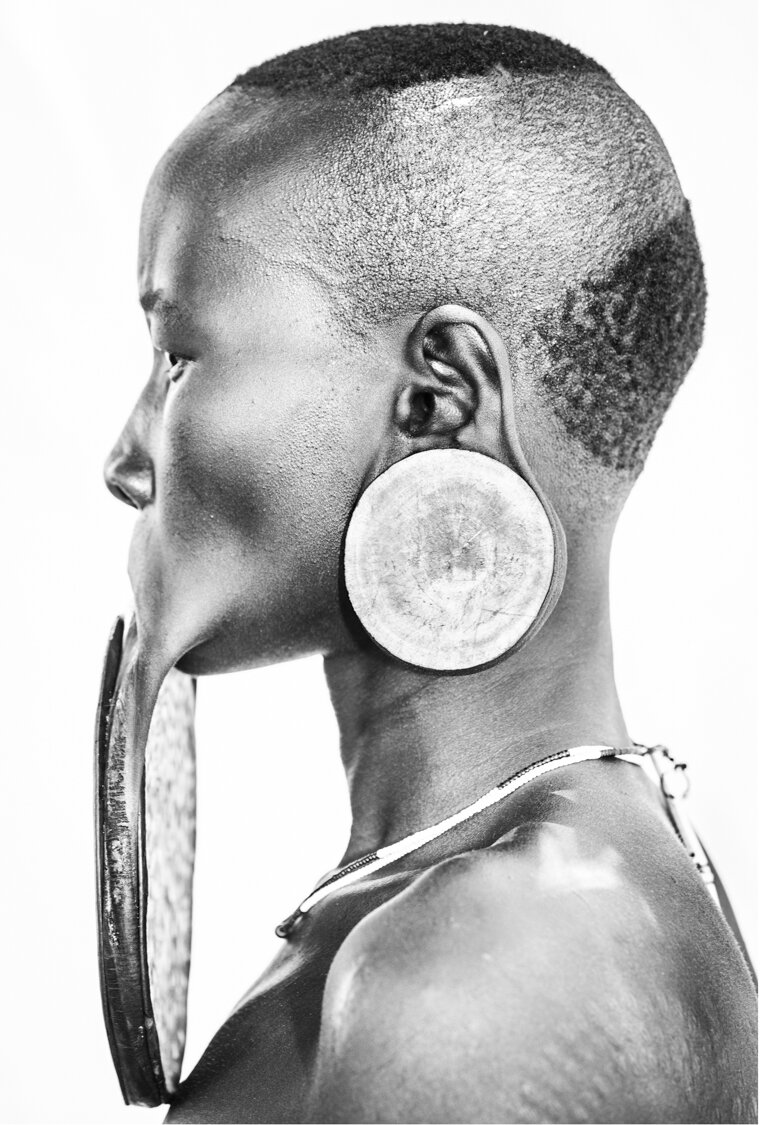 Image 1 of 3
Image 1 of 3

 Image 2 of 3
Image 2 of 3

 Image 3 of 3
Image 3 of 3




Mursi Tribe – Clay Lip Plate
This Mursi woman from southern Ethiopia had the largest lip plate I had ever seen, so heavy she had to support it with her hand. Lip plates, made from natural clay, are a significant aspect of African tribal art. This tradition is slowly fading as younger women avoid this practice.
In the Mursi tribe, when a young woman reaches puberty or marriageable age, she starts the process of stretching her lip to wear a lip plate, a symbol of beautification and status. A large lip plate can fetch a significant dowry for her family. The process involves knocking out two lower teeth, making a slit in the lower lip, and gradually increasing the size of a wooden plug until it can hold a clay plate. This results in a lifelong deformity, with the lower lip hanging loosely without the plate.
Discover the rich traditions of the Omo tribe and African tribal art through my fine art photography prints.
All photos are signed limited edition prints: M 50 : L 25 : XL 15
Print sizes in the drop-down menu refer to the image size only
Each photograph has a 2-inch (5cm) white border surrounding the image
Need more info, head to Details & Frequently Asked Questions on the menu bar in INFO
This Mursi woman from southern Ethiopia had the largest lip plate I had ever seen, so heavy she had to support it with her hand. Lip plates, made from natural clay, are a significant aspect of African tribal art. This tradition is slowly fading as younger women avoid this practice.
In the Mursi tribe, when a young woman reaches puberty or marriageable age, she starts the process of stretching her lip to wear a lip plate, a symbol of beautification and status. A large lip plate can fetch a significant dowry for her family. The process involves knocking out two lower teeth, making a slit in the lower lip, and gradually increasing the size of a wooden plug until it can hold a clay plate. This results in a lifelong deformity, with the lower lip hanging loosely without the plate.
Discover the rich traditions of the Omo tribe and African tribal art through my fine art photography prints.
All photos are signed limited edition prints: M 50 : L 25 : XL 15
Print sizes in the drop-down menu refer to the image size only
Each photograph has a 2-inch (5cm) white border surrounding the image
Need more info, head to Details & Frequently Asked Questions on the menu bar in INFO





















